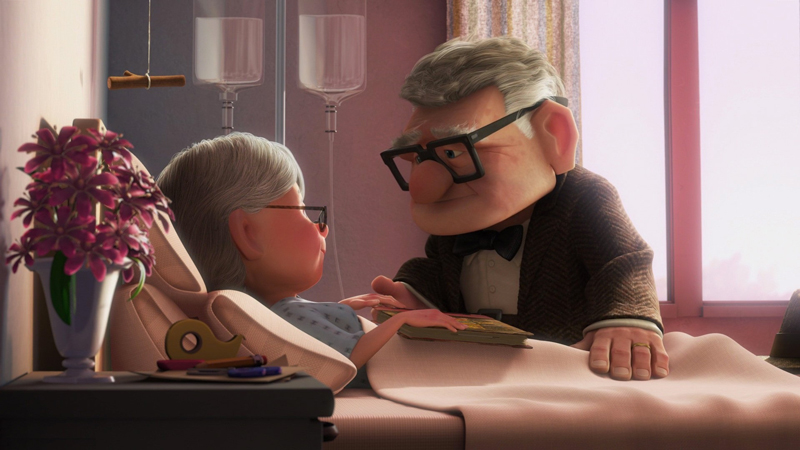Three films that invite us to love life even through illness
One of the trendy themes in recent filmography is the dignity of life for those that struggle with illness or have reached the end of their lives.
In another article, Film and Fiction to the Test of Bioethics, we pointed out that on these issues scriptwriters and movies generally convey the message that the value of life is subordinate to that of autonomy of choice: Freedom of choice exceeds the value of life. We need only think of Me Before You (2016, directed by Thea Sharrock), where Will, a young and wealthy banker who ended up in a wheelchair after an accident, decides to proceed with assisted suicide, despite having found a full life again with Louisa. The girl’s presence, while considered wonderful, isn’t a good enough reason to stay.
Yet there are also profound and delicate films that show how illness can be an opportunity to grasp what really matters, that show the dignity of human existence in all its conditions, and that remind us how important it is to live fully until the very the end. Below are just a few suggestions for films like this.
The Savages (2007). Directed by Tamara Jenkins
John and Wendy are siblings who live far from each other and rarely speak.
Both are dissatisfied with their lives, both relationally and professionally. Suddenly they find themselves caring for their elderly father together, with whom they do not have a good relationship. Additionally, his father has dementia. The two brothers, forced to see each other again to care for their parent, will get to know each other better and reestablish long-buried family ties.
The film realistically depicts illness as a way to find meaning in life and as an opportunity to rediscover love through suffering.
The Diving Bell and the Butterfly (2007). Directed by Julian Schnabel
Jean-Dominique Bauby is the editor-in-chief of Elle magazine. While in the car with one of his sons, he is struck by a stroke.
He wakes up after a long time in a coma in a hospital bed and discovers that his brain no longer has any connection to the central nervous system, rendering him completely paralyzed.
He cannot even speak and has lost sight in his right eye. Perfectly able to understand everything and fully self-aware, he perceives his body as a cage: he calls it a “diving bell.”
Yet, he can still move his left eye: he will use it to continue communicating with the outer world. When asked specific questions (by choosing the letters of the alphabet ordered according to a specific sequence), he is able to say “yes” by blinking once or “no” by blinking twice. In such a way he dictates an entire book, released in France in 1997, which the title of film has mirrored.
“The chances I didn’t want to take, the moments of happiness I let slip away. I was blind and deaf. Or I necessarily needed the light of an infirmity to see my true nature?,” the protagonist says, in his new way of speaking. This rich film is based on a true story.
The Intouchables (2011). Directed by Olivier Nakache and Eric Toledano
Driss has a turbulent relationship with his family and spends his life in and out of prison, in perpetual search of state benefits until something unthinkable happens: paraplegic billionaire Philippe chooses him as his personal assistant. He is thus assigned to be by his side at all times, to move him, dress him, wash him, help him with physical therapy, etc.
The world in which Philippe lives is a stark contrast to that of Driss’s: the film places in tragicomic contrast “white, rich France” versus a “poor, troubled France,” which includes many foreigners like Driss, who are not fully integrated into society.
Mixing reality and fiction (“real events” are included and this is seen in the opening and closing scenes featuring faces of the real characters), the film presents a heart-warming and hope-giving tale.
The viewer laughs and cries along with the main characters and is led to think along with them that true friendship can make even the most difficult life worthwhile and irreplaceable.
Clouds (2020). Directed by Justin Baldoni
Zach, a 17-year-old boy who is passionate about music, discovers that he is now terminally ill with untreatable cancer. The screenplay is inspired by the biographical book Fly a Little Higher: How God Answered a Mom’s Small Prayer in a Big Way, written by the young man’s mother soon after his death.
The film, as well as the book upon which it is based, is not the conventional sob story: the protagonist is not a young man who is dying, but a boy who is struggling to live fully.
“I am a fighter,” he declares from the beginning. Rather than think only of himself, he tries to “give everyone what they want,” allowing him to be seen as sympathetic and cooperative. In return, he receives friendship with his schoolmates and affection from his family (two parents and three siblings) instead of pity.
One very touching scene—though, that is not heartbreaking—is the sequence where he is in the bathroom in front of the mirror after he learns he is terminally ill and tries to do smile exercises despite the anguish that assails him.
He enrolls in college, even though he knows he won’t be able to go (then again, who really has certainty about the future?), and when he floats the idea of giving up school to one of his professors, he replies, “Giving up is not an option.”
Everyone around him offers him reasons to live. Surrounded by the affection of his family, a friend, and his girlfriend, he manages to make the last months of his life magnificent and meaningful.















